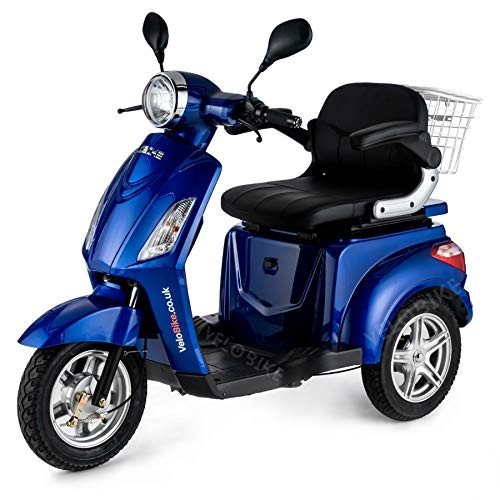best_mobility_scooters4691
About best_mobility_scooters4691
Guide To Mobility Scooters UK: The Intermediate Guide To Mobility Scooters UK
Navigating the World of Mobility Scooters in the UK
Mobility scooters have become a necessary tool for numerous in the United Kingdom, offering a practical and dignified solution for people with mobility problems. These scooters not just boost the lifestyle for their users but also supply a sense of self-reliance and liberty. This thorough guide aims to provide an introduction of mobility scooters in the UK, including their benefits, types, purchasing considerations, and maintenance suggestions.

Intro to Mobility Scooters
A mobility scooter is a battery-powered vehicle designed to help people with walking troubles or restricted mobility to walk around more easily. Unlike manual wheelchairs, which need significant physical effort, mobility scooters are easy to operate and can be utilized both inside your home and outdoors. They are particularly helpful for older adults and people with impairments, enabling them to travel longer distances and navigate different surfaces with ease.
Advantages of Mobility Scooters
-
Independence and Freedom
- Mobility scooters empower users to take a trip independently, minimizing the requirement for assistance from others.
- They can be used for day-to-day activities such as shopping, going to good friends, or participating in gatherings.
-
Economical
- While there are preliminary costs, mobility scooters can be a cost-efficient alternative to other mobility help, specifically gradually.
- Lots of models are readily available for rent or lease, offering versatility for users with varying needs.
-
Convenience and Safety
- Scooters are created with ergonomic seats and adjustable features to make sure convenience during long periods of use.
- Security functions such as lights, horns, and braking systems improve user self-confidence and security.
-
Social Inclusion
- By allowing individuals to take part in community activities, mobility scooters promote social addition and decrease sensations of seclusion.
-
Health Benefits
- Routine use of a mobility scooter can help preserve physical health by encouraging users to remain active and engaged.
Kinds Of Mobility Scooters
Mobility scooters in the UK be available in numerous types, each designed to accommodate various requirements and preferences:
-
Class 2 Scooters (Pavement Scooters)
- Speed: Up to 4 miles per hour
- Use: Designed for usage on pavements and within indoor areas
- Advantages: Compact and lightweight, perfect for short distances and daily errands
-
Class 3 Scooters (Road and Pavement Scooters)
- Speed: Up to 8 mph on roads and 4 miles per hour on pavements
- Use: Suitable for longer journeys and can be used on both roadways and pavements
- Benefits: More robust and efficient in dealing with various terrains, consisting of rough surfaces and inclines
-
Off-Road Scooters
- Speed: Varies, however usually greater than Class 2 and Class 3 scooters
- Use: Designed for off-road use, including parks, routes, and unequal surfaces
- Advantages: Enhanced toughness and traction, perfect for adventurous users
-
Travel Mobility Scooters
- Speed: Varies, however normally as much as 4 mph
- Usage: Portable and easy to take apart for transportation
- Advantages: Perfect for users who travel frequently and need a portable service
Buying Considerations
When buying a mobility scooter, a number of elements should be thought about to ensure the very best suitable for the user’s requirements:
-
User’s Physical Condition
- Weight Capacity: Ensure the scooter can support the user’s weight.
- Height and Reach: Choose a design that is adjustable to fit the user’s height and reach easily.
-
Intended Use
- Indoor/Outdoor: Determine if the scooter will be used primarily inside, outdoors, or both.
- Terrain: Consider the kind of surface the user will navigate, including any hills or rough surfaces.
-
Battery Life and Range
- Battery Type: Lithium-ion batteries are typically more efficient and longer-lasting than lead-acid batteries.
- Range: Check the scooter’s range to guarantee it fulfills the user’s daily travel requirements.
-
Safety Features
- Brakes: Look for scooters with trustworthy braking systems.
- Lights and Horns: Essential for exposure and notifying others.
-
Guarantee and Customer Support
- Service warranty: Ensure the scooter includes a comprehensive service warranty.
- Customer Support: Choose a reputable maker with great customer service and assistance.
Upkeep and Safety Tips
Proper maintenance is important to guarantee the longevity and security of a mobility scooter:
-
Regular Battery Checks
- Charging: Always keep the battery charged to avoid deep discharge.
- Cleansing: Keep the battery compartment clean and totally free from dirt and wetness.
-
Tire Maintenance
- Inflation: Regularly check and maintain correct tire pressure.
- Evaluation: Inspect tires for wear and damage, changing them as needed.
-
Clean and Lubricate
- Cleaning: Wipe down the scooter regularly to keep it free from dirt and grime.
- Lubrication: Lubricate moving parts to avoid rust and make sure smooth operation.
-
Security Checks
- Brakes: Test the brakes routinely to guarantee they are functioning properly.
- Lights and Horns: Check that all safety functions are operational.
-
Follow Manufacturer Guidelines
- Manual: Refer to the user manual for specific maintenance instructions.
- Service: Schedule regular service checks with a certified professional.
Often Asked Questions (FAQs)
-
Can anybody utilize a mobility scooter?
- No, just individuals with a medical need or disability are qualified to use a mobility scooter on public roadways and pavements in the UK. Nevertheless, they can be used by anybody on personal property.
-
Do I need a license to drive a mobility scooter?
- No, a license is not required to utilize a Class 2 or Class 3 mobility scooter. However, users need to be over 14 years old and have a genuine requirement for the scooter due to a disability or medical condition.
-
How fast can a mobility scooter go?
- Class 2 scooters have a maximum speed of 4 miles per hour, while Class 3 scooters can reach up to 8 mph on roads and 4 miles per hour on pavements.
-
Can I take a mobility scooter on public transportation?
- Some public transport, such as trains and buses, may allow mobility scooters, but it depends on the specific service and the size of the scooter. It’s best to contact the transportation provider beforehand.
-
What is the life-span of a mobility scooter?
- With proper maintenance, a mobility scooter can last a number of years, generally in between 5 and 10 years.
-
Can I get financial help to buy a mobility scooter?
- Yes, monetary help might be available through the Disabled Facilities Grant (DFG), regional authorities, or charitable organizations. In addition, some insurance companies might cover part of the cost.
Mobility scooters are a valuable help for individuals with mobility problems in the UK, using a variety of benefits from increased self-reliance to enhanced social involvement. By thinking about the user’s requirements, the desired use, and the scooter’s functions, one can choose the ideal design to boost their quality of life. Regular upkeep and adherence to safety guidelines are vital to guarantee the scooter remains a reliable and safe mode of transport. For those who certify, monetary assistance may be offered to make the purchase more economical. Whether for daily use or occasional trips, a mobility Scooters uk scooter can significantly enhance the user’s ability to navigate the world with confidence and ease.
Additional Resources
- Mobility Aids UK: A comprehensive directory site of mobility aids and scooters.
- NHS Choices: Information on mobility aids and monetary help.
- Disability Living Allowance (DLA): Guidance on obtaining monetary support for disability-related costs.
By exploring these resources and thinking about the points described in this guide, individuals can make an informed decision about buying and using a mobility scooter in the UK.
No listing found.

